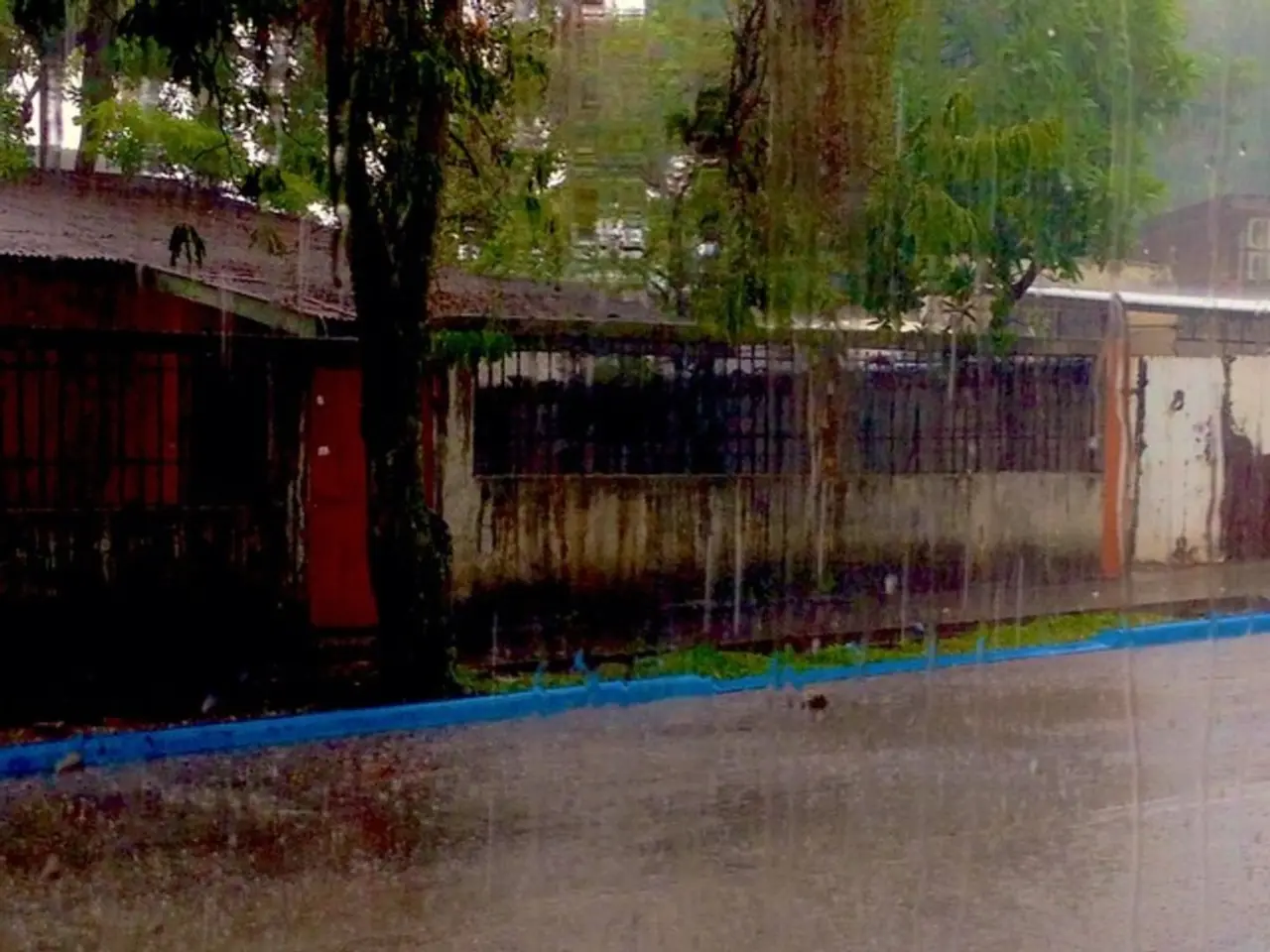Catastrophic storm leads to several trees collapsing - Roadways submerged under water
Germany Endures Severe Storm: Widespread Damage and Emergency Responses
A severe storm swept through parts of Germany on the evening of August 1, 2025, causing substantial damage and prompting numerous emergency responses. The storm, which hit the city of Offenburg particularly hard, resulted in flooding, infrastructure disruptions, and rapid firefighting operations.
The city of Offenburg experienced heavy rain, flooding, and thunderstorm activity, leading to a warehouse being flooded and nearby businesses being affected in the industrial area. The storm also caused disruption to train services due to a tree hanging from overhead lines. Although the exact number of emergency deployments is not specified, it is clear that the response was swift and extensive.
In the nearby town of Weinheim, located in the Rhein-Neckar district, 50 firefighters from the voluntary fire service tackled around a dozen incidents. Cellars had to be pumped out, and streets cleared, as the storm caused flooding. Moreover, a fire station in the Lützelsachsen district of Weinheim was also damaged by heavy rain.
The storm's impact was not limited to Weinheim. In the city of Nuremberg, there were 100 deployments due to the storm, with several incidents of aquaplaning reported. In Mannheim, a tree fell onto a moving tram, damaging the overhead line and the tram, but fortunately, no injuries were reported.
The storm also affected the southern Hesse town of Hattersheim am Main, where 40 personnel were deployed to 18 locations. The first alarm was sounded at 16:48 due to a tree that snapped off at the zoo. In addition, a shopping market, an underpass, and several residential houses were also affected by water damage.
The Neckar-Odenwald district was not immune to the storm's effects. A train line between Zwingenberg (Baden) and Mosbach-Neckarelz had to be closed due to storm damage. An eight-bus replacement service has been set up between Eberbach and Seckach in the district to mitigate the disruption.
In the districts of Upper and Lower Allgäu in Bavaria, three people were lightly injured due to heavy rain and aquaplaning on the A7 near Bad Grönenbach and on the A96 near Buchloe and Erkheim.
The storm front left visible traces in some regions of Germany, with trees uprooted, basements and streets flooded, and a railway line had to be closed. The total damage in the districts of Upper and Lower Allgäu was estimated at around 85,000 euros.
In the district of Aschaffenburg, two communities, Haibach and Bessenbach, were affected by flooded streets and basements filled with water. In Haibach, there were over 35 storm-related deployments, including numerous flooded basements, lifted gully covers, and a large tree that fell onto the street. In Bessenbach, there were 30 deployment sites until around 21:30, with water standing up to 30 centimeters deep on some streets.
Although the storm caused significant damage, it is important to note that the available information does not provide a detailed overall damage cost or total number of emergency deployments for this specific storm event on August 1, 2025. The focus is on the severity of damage like flooding and infrastructure impact, plus multiple emergency responses.
Other severe weather events around that timeframe, such as hailstorms in Bavaria on July 20, 2025, and hailstorms in Italy and Spain on August 2, 2025, caused significant structural damage but are distinct from the German storm on August 1.
In conclusion, the August 1, 2025, severe storm in Germany, particularly in Offenburg, caused substantial flooding and damage with numerous firefighting operations deployed rapidly. While the precise overall damage figures and deployment numbers are not detailed in the available sources, the impact of the storm is evident in the flooded streets, damaged infrastructure, and rapid emergency responses across various regions of Germany.
More weather-forecasting could have alerted residents to the impending severe storm and allowed them to take necessary precautions. The damage in Offenburg could have been reduced with a more accurate weather-forecast.
Despite the extensive damage and numerous emergency responses to the August 1, 2025, storm, further weather-forecasting could help mitigate similar events in the future.








